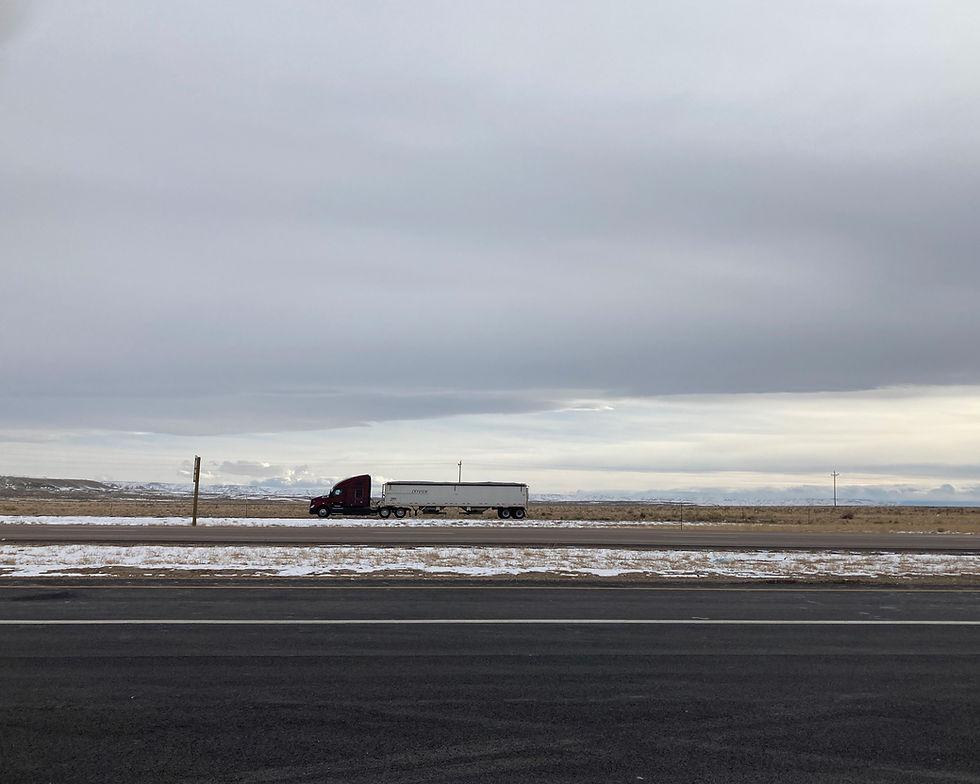COSOR Disappearances
Origin
COSOR disappearances are specific mysteries, inextricable from post-World War II life in the United States. Fueled by the G.I. Bill and the reconversion of war production factories to civilian industry, COSOR disappearances emerged as phenomenon alongside the establishment of Eisenhower's interstate system. The Interstate Highway System not only constructed a transportation network invaluable to the rapidly growing population, economy, and military defenses but cemented the romantic mythology of the open road in American culture. COSOR disappearances are not coincidental: There is something peculiar about a person disappearing from a car, the vehicle par excellence of independence, adventure, and escape, the machine whose advent represents a significant logistical and psychological change in the lifestyle and value system of the average American. In cases of COSOR disappearances, the abandoned automobile may be seen as a symbol of the abandonment of the American Dream and its connected expectations, obligations, and morality supporting neoliberalism. COSOR disappearances play to our general fascination with mystery and chronic capitalist affliction: the simultaneous fear and desire to escape it.
Typology
Project COSOR recognizes six categories of COSOR disappearances: foul play, mechanical (including accident and collision), neurological, new identity, suicide, and inexplicable. Each can be further analyzed by the state of the abandoned car when found, for example: damaged or undamaged; engine running or shut off; locked or unlocked; parked in the direction of traffic or opposing; vehicle registered to the missing person or other. This kind of analysis may only be effective when such evidence can be input into an investigative model designed to arrive at a rational explanation for disappearance, which is problematic when considering the "inexplicable" category.
Inexplicable COSOR Disappearances
A COSOR disappearance is categorized as inexplicable when the evidence or absence of evidence—whether physical, circumstantial, or anecdotal—is incompatible with or unexplained by conventional investigation. Inexplicable COSOR disappearances are the most disconcerting because they necessitate abandoning logical models used to understand the other five categories. COSOR disappearances speak to the removal of a person, thus each of the six categories presupposes the existence of a person. However, in cases of inexplicable COSOR disappearance, there is no investigative potential beyond that supposition, only baseless imagination, and existence becomes eerily suspended—The person becomes disexistent.
Disexistence & Disinclusion
Disappearance is illuminated by what is absent from the COSOR (such as a person, history, or mythology). Existence is intrinsic—something to dis- (or re-). In the broader context of an archive or database, inclusion similarly presupposes existence, whether current, prior, or anticipated. As such, it may seem necessary to reference the established archive when discussing what is not included. However, this model often confines the inverse archive to known omissions, with analysis dependent on individual characteristics derived from known variables.
COSOR presents a novel opportunity to contemplate absence and disappearance independently, liberated from the constraints of oppositional understandings. It enables the discovery and integration of new variables, thereby expanding the scope and potential of the inverse archive. This expansion is crucial, opening the inverse to obscure or latent information and narratives that might otherwise be omitted. By acting as an intervention between the established archive and an inverse based on exclusion, COSOR paves the way to explore not only what is excluded or unincluded but also what is disincluded.
Devoid of intentionality, disinclusion encompasses elements or entities that cannot be included, excluded, or unincluded within the archive due to the absence of characteristics that would register in the established model for recognizing existence and subsequently determining inclusion status. It is a disruption, an opening, in the inverse archive. Disinclusion is not elucidated by conventional investigatory or analytical models reliant on antithesis or predetermined variables, which parallels the elusive nature of inexplicable COSOR disappearances. Both disexistence and disinclusion play pivotal roles in probing inexplicable COSOR disappearances.

